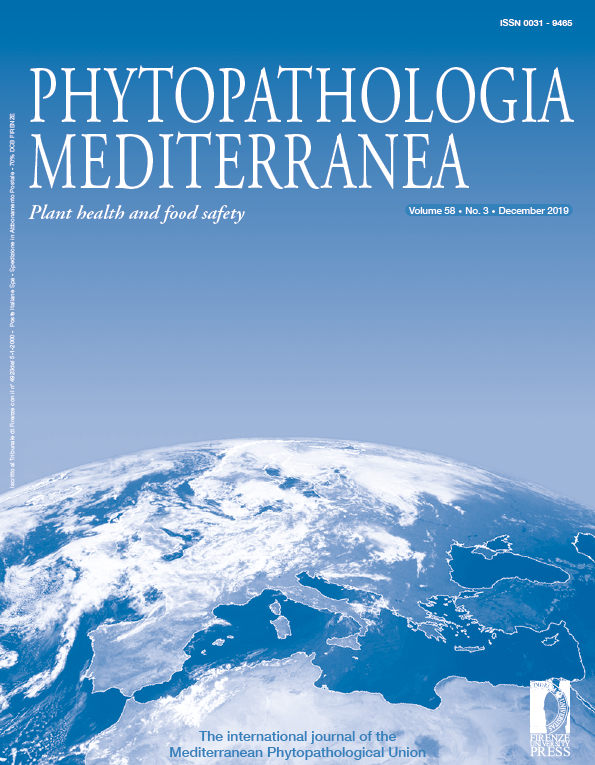Published 2019-12-30
Keywords
- Exotic pathogens,
- endemic pathogens,
- agricultural crops,
- minor crops,
- forest ecosystems
How to Cite
Abstract
A disease is recognized as emerging if it is new, it occurs in a new host, there is an unexpected outbreak, its economic importance increases, if it attracts public opinion and the scientific community regardless of economic importance, or if it appears in an area for the first time (referred to as geographic emergence). This review deals with major driving factors of the emergence of plant diseases caused by soil-borne fungi and oomycetes (here indicated as “fungi”), in Italy during recent years. These factors include: accidental introduction of alien pathogens by human activities; effect of climate change; unusually severe weather events; favourable environmental and ecological conditions; pathogen genetic variation; host shifts and expansion of host ranges; introduction or expansion of the geographic range of a susceptible plant species or variety; limited availability of fungicides or development of fungicide-resistance pathogen strains; changes of cropping systems; and/or increased pathogen in soil as a consequence of intensive monoculture of crops. Although in most cases more than a single driving factor contributes to the emergence of an infectious disease, there are examples where a determinant may prevail over others. The case studies reviewed include pathogens belonging to major genera of soil-inhabiting fungi and oomycetes, including Armillaria, Calonectria, Coniella, Fusarium sensu lato, Ilyonectria, Monosporoascus, Plectosphaerella, Rhizoctonia, Rosellinia, Sclerotinia, Sclerotium, Verticillium, Pythium and Phytophthora. The examples encompass natural and forest ecosystems, economically important agricultural crops including citrus, fruit trees, olive, legumes, vegetables, and ornamentals, as well as exotic or expanding minor crops, such as avocado, goji berry, and pomegranate. Whatever the prevailing driving factor(s) these case studies all show that the large-scale emergence of soil-borne fungal diseases of plants is the consequence of human activities.







